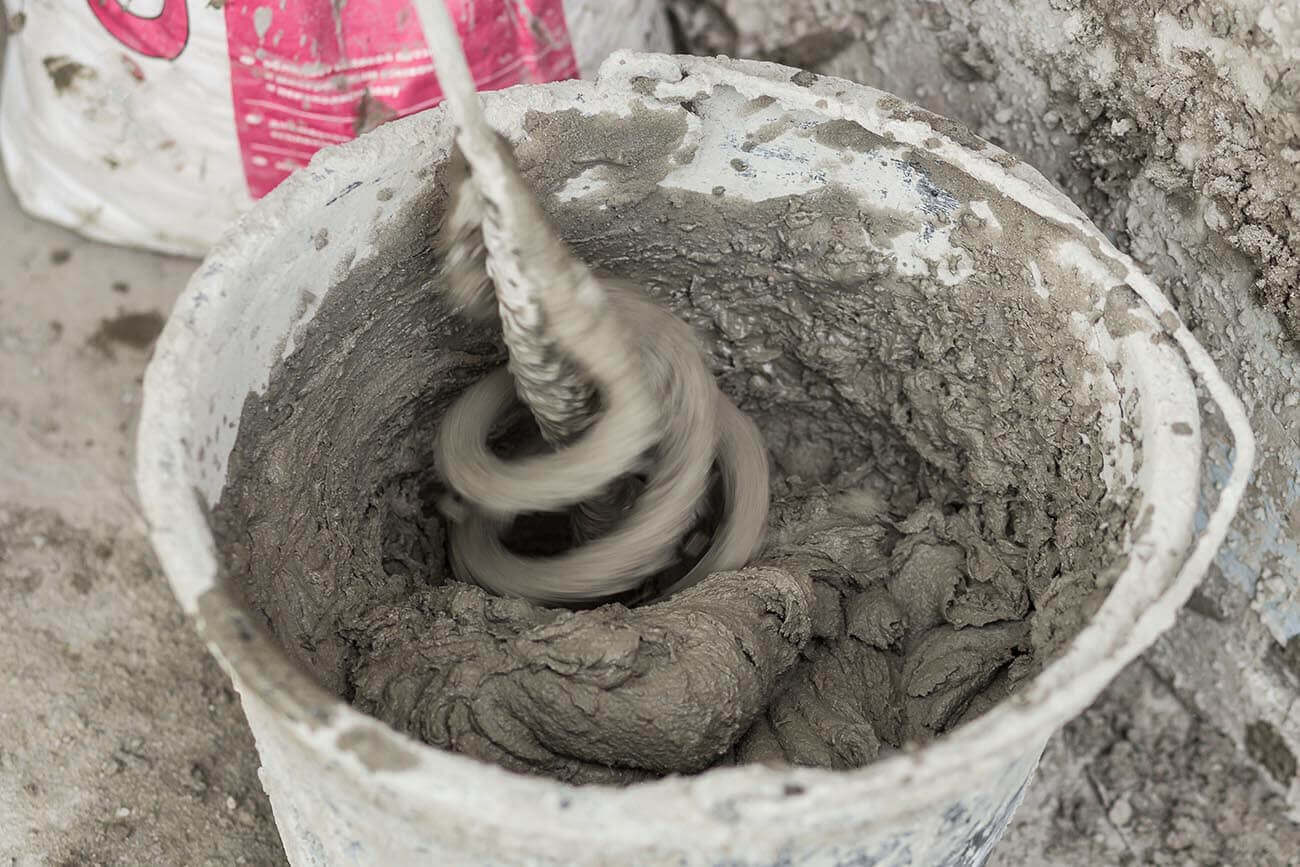
Concrete Mix Ratio What Is It? What Is 123?And More. Handyman's World
A cement ratio mix is what determines how strong or weak your concrete will be. It's the ratio of portland cement quantity to the aggregate of your concrete. The more portland cement you add, the stronger and sturdier your concrete will be.

In this article, we explained how to determine the concrete mix ratio in relation to the number
Nowadays, we typically use a 1:2:4 mix ratio when building a reinforced concrete single-story house. As a nickname, we can call this mix M15 grade, which comes from its corresponding 15 MPa compressive strength.If we want to build a 2-story house, we would need a stronger mix like the M20 grade mix, which follows a 1:1.5:3 mix ratio.. When calculating the amount of cement in a mix, it is worth.

Water Cement Ratio Calculation Engineering Discoveries
Concrete mix ratio is a vital topic in concrete mix design. The four basic ingredients for making concrete are: Portland cement, sand, aggregate (stone) and water. The strength of concrete mixture depends on the ratio in which these four ingredients are mixed.
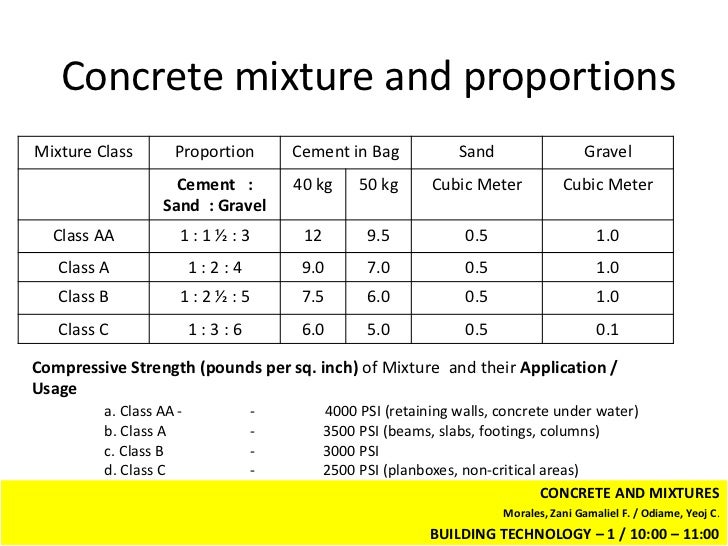
[Question] What are concrete mixtures AA, A, B, C? r/HomeImprovement
Combine sand, cement and water to make a mortar and to make concrete, add aggregates to the mix. Mix thoroughly until it reaches the right consistency Mix materials to make mortar or cement Get cleaning to prevent hardening
ALL YOU WANT TO KNOW ABOUT CEMENT MIX RATIO AND ITS USES lceted LCETED INSTITUTE FOR CIVIL
What is cement mix? 2. Types of cement mix 2.1. Fast-setting cement mix 2.2. High-strength cement mix 2.3. All-purpose cement mix 3. What is the ideal cement mix ratio? 4. How to mix cement with other materials? 4.1. Dry mix preparation 4.2. Safety equipment 4.3.
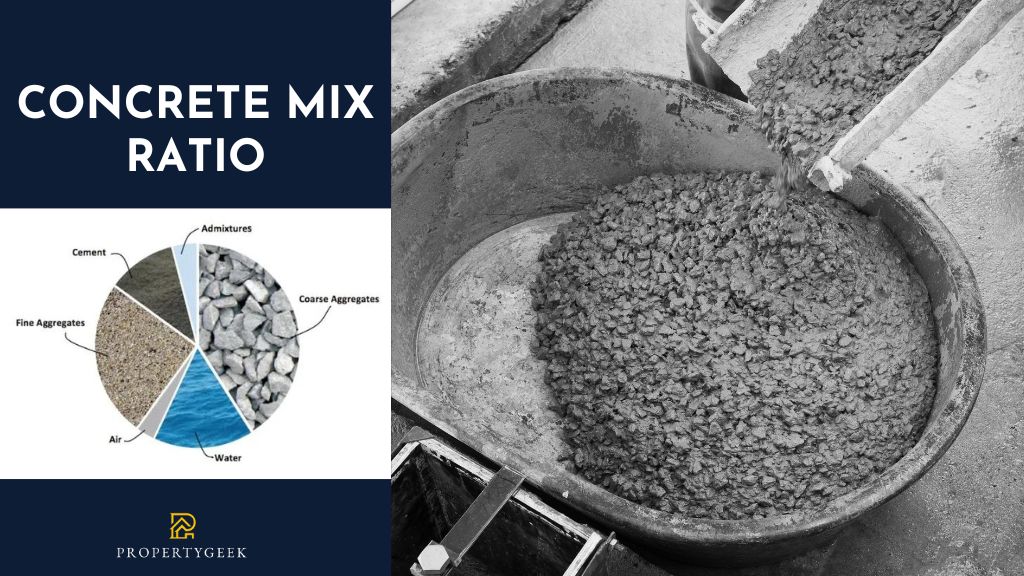
4 Types Of Concrete Mix Ratio And Grades With Tables
Some basic mixing ratios for concrete are 1:2:3, 1:3:3, 1:2:4. These mixing ratios are based on the proportions of cement : sand : stone in that order. The ratio you use will depend on what psi strength you need. a good mixture for concrete has 4 basic ingredients To make concrete there are four basic materials you need:

Concrete mix ratio Table concrete grade types Civil Sir
The first step in working with concrete is learning how to mix it properly. Here, we'll show you what the perfect mix looks like. We'll also show you a mixing technique that will ensure thoroughly mixed concrete with a minimum of effort. What's the Difference Between Concrete and Cement? Cement is an ingredient in concrete.

Concrete Mix Ratio What Is It? What Is 123?And More. Handyman's World
However, the most common mortar mix ratio for type N is 1 part cement, 1 part lime, and 5 to 6 parts sand. Type O Type O is the next most common mortar type that sees use almost exclusively indoors. This is because type O mortar, after drying, is noticeably weaker than the basic type N.

Concrete Mix Ratio What’s In A Cement Mix And Why It Is Important Orlandi (2022)
Spread the love. Common cement, sand, and aggregate mix ratios for concrete include 1:2:4, 1:3:6, and 1:4:8, with one part cement, two, three, or four parts sand, and four, six, or eight parts aggregate respectively. These ratios determine the strength and workability of the concrete, and the specific mix should be chosen based on project.

Different Grade Of Concrete and water Cement Ratio Types of Concrete All About Civil
Determine the water content, W, from required workability, size and type of aggregate. Step #4. Determine cement content, C, from W/C ratio and water content. Step #5. Estimate the density of wet fresh concrete, D, based on relative density of combined aggregate and water content.
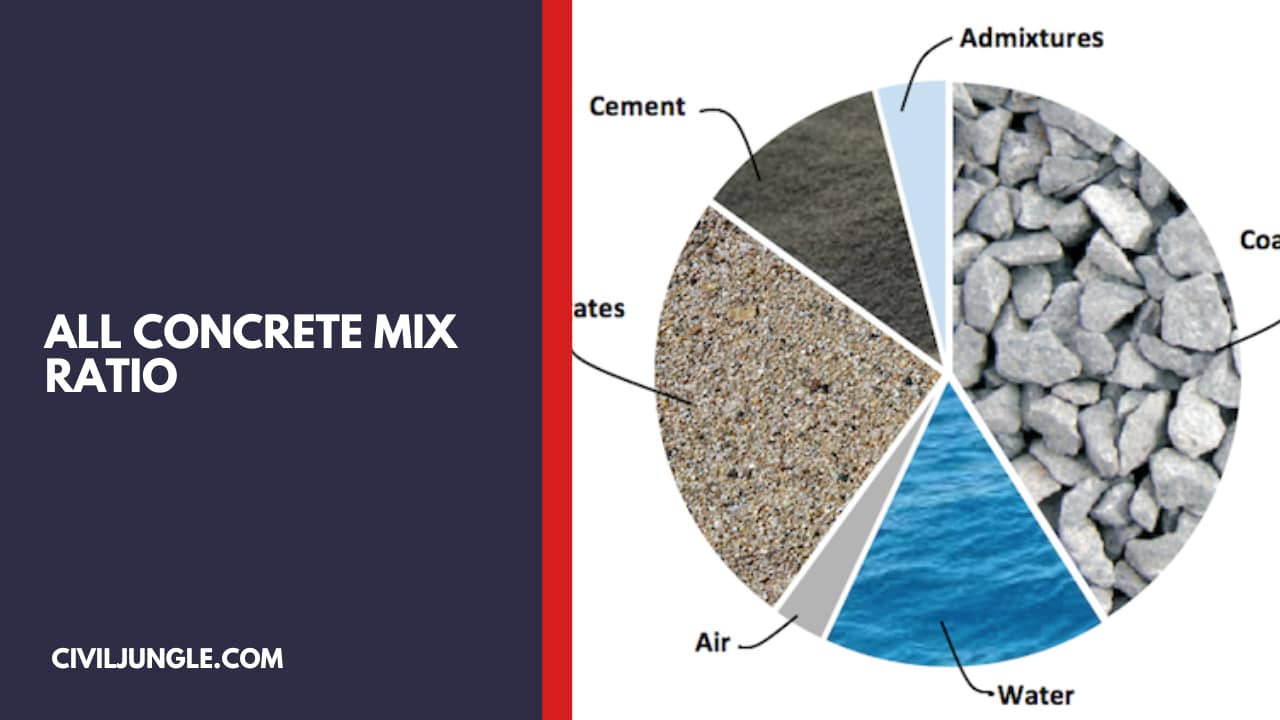
Concrete Mix Ratio What Is Concrete Mix Ratio Types of Concrete Mix Ratio
In case of trial mix 3 water cement ratio is varied by +10% keeping water content constant. In the present example water cement ratio is raised to 0.55 from 0.5. An increase of 0.05 in the w/c will entail a reduction in the coarse aggregate fraction by 0.01. Hence the coarse aggregate as percentage of total aggregate = 0.558 - 0.01 = 0.548 W.
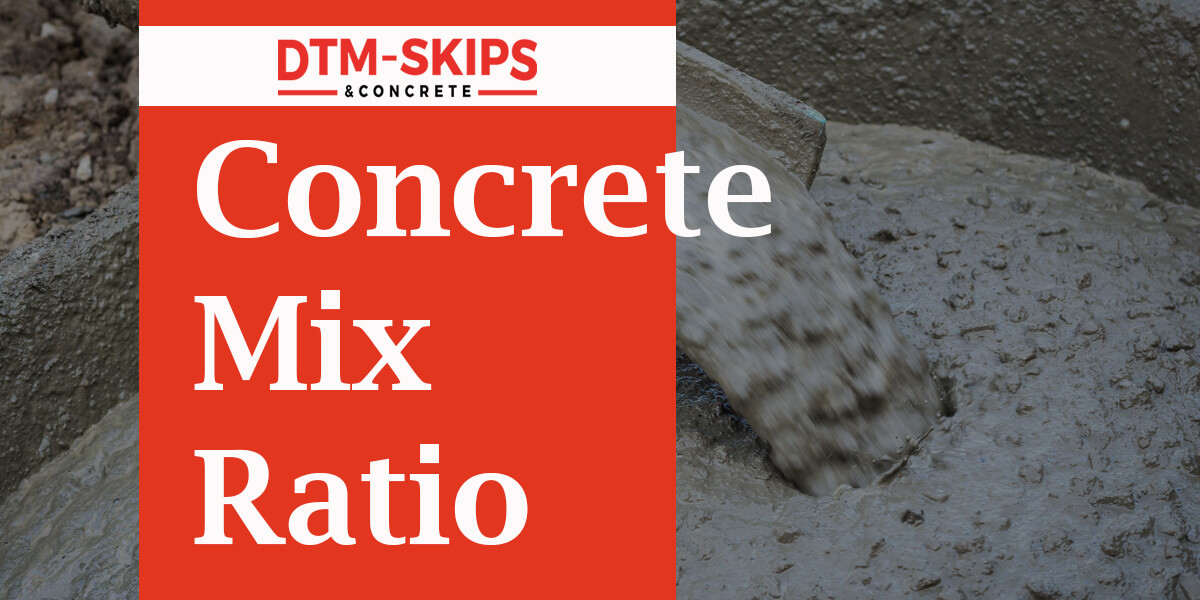
How To Correctly Mix Concrete? Concrete Mix Ratio DTM Mix Blog
Some necessary mixing ratios for concrete are 1:2:3, 1:3:3, 1:2:4. These mixing ratios are based on the relationships of cement : sand : stones in that law. The ratio you do will depend on what psi power you require. To make concrete there are 4 basic materials you require: Portland cement - You can purchase this in a 95lb bag

CEMENT MORTAR MIX RATIO AND ITS APPLICATION LCETED mixratio in 2021 Concrete mix design
The water to cement ratio is calculated by dividing the water in one cubic yard of the mix ( in pounds) by the cement in the mix (in pounds). So if one cubic yard of the mix has 235 pounds of water and 470 pounds of cement- the mix is a .50 water to cement ratio. If the mix lists the water in gallons, multiply the gallons by 8.33 to find how.
Concrete Mix Ratio Types, Grades, & Design Civiconcepts
Concrete mix ratios are usually expressed as a series of numbers, such as 1:2:3 or 1:3:5. The first number represents the amount of cement, the second number represents the amount of sand, and the third number represents the number of aggregates. For example, a mix ratio of 1:2:3 means that there is one part cement, two parts sand, and three.
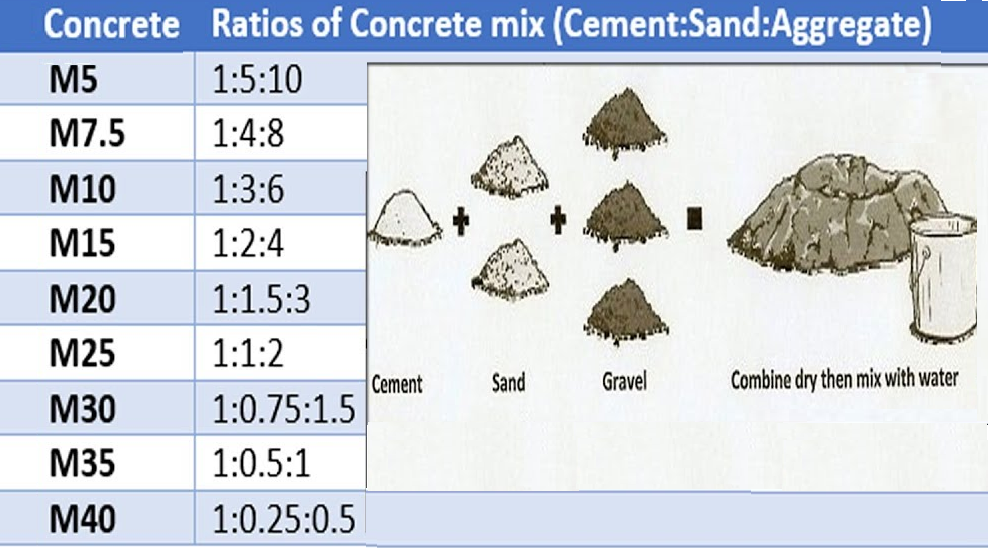
What is the strongest concrete mix ratio?
These mixes are termed standard mixes. IS 456-2000 has designated the concrete mixes into a number of grades as M10, M15, M20, M25, M30, M35 and M40. In this designation the letter M refers to the mix and the number to the specified 28 day cube strength of mix in N/mm 2 . The mixes of grades M10, M15, M20 and M25 correspond approximately to the.

Grade of Concrete,Mix Ratio and WaterCement RatioHow to do Compressive Strength Test of
123 Concrete Mix. Concrete mix according to the 1-2-3 ratio is called a classic mix - standard concrete. Therefore, the ratio should consist of 1 part cement powder, 2 parts sand, and 3 parts washed aggregate. Water is also added to get the desired consistency.